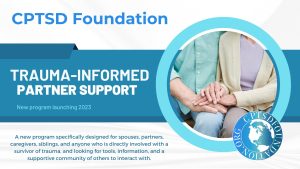The word trauma has become a buzzword in today’s culture, with many choosing to use it to describe everything from a mildly bad experience with a possible significant other to a hung nail.
Trauma describes life-altering events, and this article will discover with you what trauma is and how you can set goals to defeat it.
What is Trauma?
 Trauma is a long-lasting emotional response resulting from distressing events that harm your sense of safety, sense of self, and ability to regulate your emotions.
Trauma is a long-lasting emotional response resulting from distressing events that harm your sense of safety, sense of self, and ability to regulate your emotions.
The term trauma illustrates the challenging emotional consequences left after you have gone through a life-altering event, with complex post-traumatic stress disorder and dissociative iden, repeated child abuse, and neglect.
Some people who have experienced severe and repeated trauma are plagued with body memories, emotional flashbacks, and never-ending hyperarousal. When memories of the traumatic events surface, survivors will experience other harsh symptoms that affect their cognitive, behavioral, physical, and psychological well-being. These symptoms are listed below.
Cognitive changes.
• Nightmares
• Seeing the event as though it were happening today
• Intrusive thoughts
• Memory loss
• Inability to concentrate
• Confusion
• Mood swings
Behavioral changes.
• Avoiding activities or places that remind one of the traumatic events
• Isolation
• Withdrawal
Physical changes.
• Fatigue and exhaustion
• Hypervigilance causing one to be easily startled
• Insomnia
• Chronic muscle pain
• Sexual dysfunction
• Body aches
Psychological changes.
• Fear
• Compulsive behaviors
• Emotional numbing
• Depression
• Guilt
• Emotional shock
• Shame
• Anxiety
• Panic attacks
Experiencing complex trauma in childhood is the leading cause of several mental health conditions, including dissociative identity disorder and complex post-traumatic stress disorder.
A Short Description of Complex Post-Traumatic Stress Disorder
 Complex Post-Traumatic Stress Disorder (CPTSD) results from long-term, chronic trauma without the ability to escape. CPTSD affects people’s ability to form healthy relationships with themselves or others.
Complex Post-Traumatic Stress Disorder (CPTSD) results from long-term, chronic trauma without the ability to escape. CPTSD affects people’s ability to form healthy relationships with themselves or others.
According to the trauma model, children who go through chronic sexual, physical, and psychological abuse and neglect develop CPTSD, making it a developmental disorder. The trauma may also include children living in war zones or experiencing human trafficking, to name a few.
CPTSD causes problems with emotional regulation where the survivor has difficulty expressing appropriately and trouble controlling emotions. Survivors experience chronic sadness, suicidal thoughts or actions, and in some cases, explosive anger.
People living with complex post-traumatic stress disorder often have trouble forming and holding intimate relationships. Also, survivors often feel the need to isolate or have no clue how to form a healthy relationship, with some swinging in the opposite direction and trusting too much, making them vulnerable to victimization.
Due to child abusers bombarding the children with negative messages about themselves, survivors have problems with their self-perception. These messages often tell the child they are not worthwhile or worthy of dignity, love, or respect. These strong messages leave the child, now an adult, believing they are bad or unworthy of life.
Trauma Goals
 Childhood trauma is a global tragedy affecting all aspects of adult life that are often hidden. The World Health Organization (WHO) states that 3-4 children, or 300 million children aged 2-4 years, suffer physical or psychological violence from caregivers. Also, 120 million girls under the age of twenty have experienced some form of unwanted sexual contact.
Childhood trauma is a global tragedy affecting all aspects of adult life that are often hidden. The World Health Organization (WHO) states that 3-4 children, or 300 million children aged 2-4 years, suffer physical or psychological violence from caregivers. Also, 120 million girls under the age of twenty have experienced some form of unwanted sexual contact.
Trauma causes survivors to struggle to move forward with their lives, and new goals must be set to feel control over their future. Below we shall explore some goals you may need to consider. The following goals are meant for use with the help of a mental health professional.
Explore and resolve your history of abuse, neglect, and victimization.
Share the details of your trauma with your therapist and reframe negative perceptions of yourself, focusing on finding meaning and drawing strength from what happened to you. Develop new strategies to help you cope with stressful reminders and memories of the abuse.
Explore your grief issues.
Discuss grief issues with your therapist from the past without forgetting any grief in the present. You can also develop appropriate rituals to honor your losses, such as your childhood or the death of a loved one.
Practice anger management.
Walk away from events that can trigger strong emotions and learn new coping skills that will aid with controlling your anger. If your anger is internalized, find three ways to communicate your anger verbally with your therapist. Take a time-out when you feel overwhelmed and learn anger management skills that will help when you encounter people who are not treating you with respect.
Reduce anxiety and improve coping skills.
Plan for your top five anxiety-provoking situations, then learn two new ways to cope. Develop strategies to distract your thoughts when you fixate on the future or ruminate on the past.
Find new methods to express your emotions.
Share two positive experiences you are proud of with your therapist and how you behaved. Recognize and experience different feelings expressing negative feelings rather than whining, crying about, or stuffing them.
Learn to make and maintain healthy relationships.
Associate with healthy people and continue to make new acquaintances. Continue to explore your past, present, and future relationships with your therapist and slowly explore dating opportunities. Explore why past relationships have fallen apart and plan to avoid the pitfalls in your next relationship. Associate with people outside of work, plus make new friends.
Learn to be free of suicidal thoughts or actions.
Explore what stressors cause you to feel suicidal and call the crisis line if you are feeling like dying by suicide. Develop a crisis plan with your therapist and share it with other key people in your life. Make a list of three emergency contacts who can help you and stay with you until the crisis passes. Never be afraid to enter an inpatient setting if you are suicidal.
In the United States, call 988 for psychological help or 911 if a person has harmed themselves.
Ending Our Time Together
Trauma is a leading cause of most mental health conditions, leaving millions struggling to accept themselves and unable to form healthy relationships. Complex post-traumatic stress disorder is one of those diagnoses having its beginnings in inescapable, repeated childhood trauma.
While it may seem that childhood trauma will continue to destroy your life, you can overcome its effects by setting personal goals with the help of a mental health professional.
There is always hope, no matter how bad the abuse was or where you find yourself today. It will take hard work and taking a hard look at yourself. However, the self-awareness and freedom you will earn make every shed tear worth it.
“There is no timestamp on trauma. There isn’t a formula that you can insert yourself into to get from horror to healed. Be patient. Take up space. Let your journey be the balm.”–Dawn Serra
“Bad things do happen; how I respond to them defines my character and the quality of my life. I can choose to sit in perpetual sadness, immobilized by the gravity of my loss, or I can choose to rise from the pain and treasure the most precious gift I have — life itself.”–Walter Anderson
References
Herman, J. L. (1992). Complex PTSD: A syndrome in survivors of prolonged and repeated trauma. Journal of traumatic stress, 5(3), 377-391. Retrieved from:
Symptoms, signs, & effects of psychological trauma. Cascade Behavioral Health. Retrieved from: https://www.cascadebh.com/behavioral/trauma/signs-symptoms-effects/
World Health Organization. (2022). Childhood maltreatment. Retrieved from:
https://www.who.int/news-room/fact-sheets/detail/child-maltreatment




My name is Shirley Davis and I am a freelance writer with over 40-years- experience writing short stories and poetry. Living as I do among the corn and bean fields of Illinois (USA), working from home using the Internet has become the best way to communicate with the world. My interests are wide and varied. I love any kind of science and read several research papers per week to satisfy my curiosity. I have earned an Associate Degree in Psychology and enjoy writing books on the subjects that most interest me.



